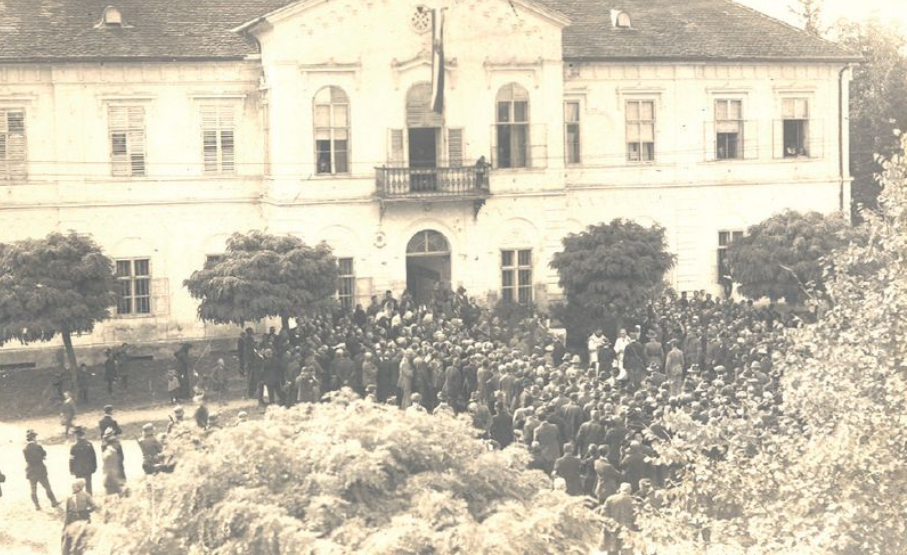Leitha-Banat – Felsőőr (Oberwart)
Fact of the Hungarian figure „Arrival of Horthy”
Part of the „Creation of the modern states (1918-1920)” topic
The Leitha-Banat, later known as Burgenland, was a short-lived state initiative proclaimed on 4 October 1921 in Felsőőr (now Oberwart, Austria) in response to the Treaty of Trianon. The treaty had awarded the territory to Austria, but local Hungarian and nationalist forces resisted its implementation. Stretching across 200 kilometers and covering parts of Vas, Sopron, and Moson counties, the region’s population was diverse—approximately 75% German, 15% Hungarian, and 15% Croatian. Though Hungary was supposed to cede the 5,055 km² strip in August 1921, the transfer was prevented by local „free groups” led by Pál Prónay, a paramilitary commander who played a prominent role in post-war Hungary’s political turmoil.
Prónay, known for his extreme nationalist views, was elected as the „ban” of the self-proclaimed Leitha-Banat. Although this state formation was not recognized by European powers, it briefly functioned with its own press, government, and even postage stamps. The local resistance and the proclamation of Leitha-Banat forced the Treaty of Venice, which modified the Trianon arrangements. The compromise led to a Hungarian-Austrian agreement, and by mid-November, Prónay’s troops withdrew, marking the end of the short-lived state.
The events surrounding Leitha-Banat reflect the broader struggle in Central Europe as nations like Hungary grappled with the territorial losses mandated by the Treaty of Trianon. Local Hungarian nationalists were deeply resistant to the disintegration of the former Austro-Hungarian Empire, and Leitha-Banat was one of several attempts to preserve Hungary’s territorial integrity. The Venice Treaty allowed for a referendum in Sopron and its surrounding areas in December 1921. The referendum resulted in Sopron and several nearby settlements remaining part of Hungary, a rare instance where Hungary was able to retain territory after the severe losses of Trianon.
By January 1923, several Hungarian settlements were returned to Hungary through border adjustments, including parts of the former Leitha-Banat region. While the Leitha-Banat itself was short-lived, the events surrounding its formation and dissolution highlight the fierce determination of Hungarian nationalists to resist the territorial rearrangements imposed by Trianon.
The Leitha-Banat episode was not isolated, but part of a broader pattern across Central Europe, where the redrawing of borders after World War I led to numerous attempts at autonomy and resistance. Similar to the Baranya–Baja Republic, which also sought independence in the wake of Trianon, the Leitha-Banat underscores the ethnic and national tensions that erupted as new borders were drawn. While Miklós Horthy did not directly lead the efforts in Leitha-Banat, his broader nationalist policies and opposition to the post-war settlement in Central Europe contributed to the atmosphere of resistance.





